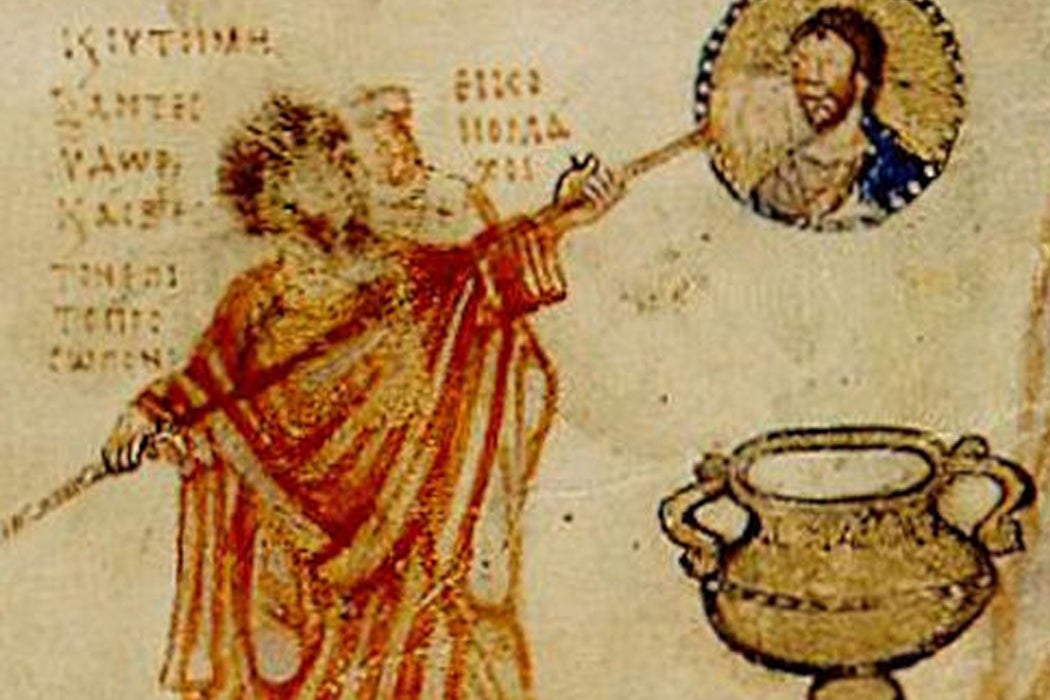If you think outside the box and disrupt the normal course of things in the office, you’re probably proud to call yourself an iconoclast. But did you know that iconoclast was originally a literal description of someone who actually broke things?
In the 8th century, the Eastern or Orthodox branch of Christianity gave history the word iconoclasm, from the Greek words for “icon smashing.” In Orthodox Christianity, ikons–images of God, Mary, saints, and martyrs– are more than just paintings or mosaics: they are holy objects in of themselves and worthy of veneration. Western Christianity doesn’t have an official equivalent.
The contested face of god
The contested place of images in Islam is much in the news now, but the Judeo-Christianity tradition has also seen a long history of conflict over images. Representation, after all, can boil down to a question of power: who gets to represent what? Commandments against idolatry and graven images and a prohibition on saying the name of god are some of the fundamental anchors of monotheism.
Norman H. Baynes in the Harvard Theological Review details the centuries of debate both within the Church and outside of it about “the cult of the icon.” Some within the Church argued that icons were idolatrous. And pagans could argue that veneration of the Cross, say, was another form of wood-worship, not so different from worshipping trees.
The Byzantine Emperor Leo III launched the first great campaign against icons around 726 with his decree prohibiting representations of religious figures. Soon his supporters were tearing down existing ones. J. Atkinson sets up the context for this event in Theoria: politics had everything to do with it, including military losses and the aftermath of the Santorini volcanic eruption, which Leo saw as a sign of God’s wrath. Tumultuous times often give rise to eras in which purity and clarity are sought.
For the next two generations, Eastern and Western Christianity were embroiled in the iconoclast versus iconodule (iconophile) debate. In Rome, Pope Gregory III, declared iconoclasm heretical in 730, but it took the Second Council of Nicaea, in 787, to agree that icons were legitimate once again in Byzantium.
An old story never ends
But that wasn’t the end of it. The Protestant Reformation, in many ways a fundamentalist revolt, sparked iconoclastic riots across Europe in the 16th century. The stark plainness of the Puritan chapel was, after all, a theological statement, just as the Counter-Reformation was, filling churches with the drama of Baroque and Rococo art.
And so it goes, for religion is predicated on rules, and the question has always been: who makes these rules, who defines the theology? Within this struggle, the power to command, or indeed to deny, forms of representation is of enormous importance.







